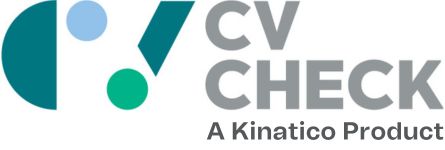There are two types of diversity: inherent diversity (the traits you are born with, such as your skin colour, ethnicity and sexuality), and acquired diversity (cultural practices, religion or level of education).
A workforce with a good cross-section of both inherent and acquired traits is known as having two-dimensional (2D) diversity – and according to the Harvard Business Review, it’s the key to innovation.
In fact, leaders who allow people from diverse backgrounds to contribute equally are nearly twice as likely to uncover valuable insights from their team.
But that’s not all. When a workplace is truly diverse and inclusive, it better fosters innovation, productivity and creativity within the business.
After early inspiration from the formidable Ann Sherry, a long-time crusader for human and, in particular, women’s rights, Lisa Annese, CEO of the Diversity Council Australia (DCA), has spent her career trying to improve diversity in the workplace. In her current role at DCA, she is responsible for developing and promoting some of the latest research on the subject.
“Diversity is important not only because it’s the right thing to do, it’s fair and just, but also because having differences, not just of thought or opinion but of experience, enriches our lives,” she says.
“In the workplace, this is really important, because having diverse people on your team means that you’re more likely to be innovative, creative and productive in reaching your desired outcomes.”
What constitutes diversity in the workplace?
While a lot has been done to improve diversity and equality in the workplace, the fact remains that women in Australia still take home, on average, $26,469 less than men a year. And for key management personnel, the gender pay gap is even wider, jumping to $88,000 a year.
We clearly have a way to go – and this isn’t the only group that experiences discrimination in the workplace.
“In Australia, I think the priorities for diversity in the workplace are a focus on gender and the inclusion of the LGBTQI community,” Annese says. “Women make up 51 per cent of the population, yet they’re overrepresented in low-paid professions, underrepresented in leadership roles and there’s a pay gap.
“We live in a multicultural country, so of course it’s going to impact on our workplaces, but rather than seeing a diversity in leadership, we tend to see more Anglo-Celtic people.
“And more and more people are identifying with disability as well, because discussions have become more open, and there is also an ageing population that is becoming more of a prevalent issue.”
The benefits of diversity to business
Annese says it’s vital that all companies – large and small – embrace the power of a diverse and inclusive workforce, as it will boost employee morale, help them appeal to a broader market and ultimately benefit their bottom line.
In fact, businesses and leadership teams that allow all employees to contribute and be heard equally have, on average, 33 per cent lower staff turnover.
“Employees who feel valued and feel as though they belong in an organisation are more likely to be engaged with that organisation, to have loyalty to that organisation and to be more productive, and that leads to better outcomes for that business,” Annese says.
“Also, on a practical note, in business these days we need to have people who are able to connect with people on a global level – that’s why multicultural diversity is really important.
“But it’s also about companies recognising that there are other markets they need to appeal to – whether that’s organisations sponsoring the gay and lesbian Mardi Gras and being active in the LGBTQI market, or catering to people with disabilities to enable them to access their goods and services.”
How to create a strong workplace diversity policy?
According to Annese, everyone is responsible for ensuring that people from all backgrounds feel safe and included in the workplace, because an organisation’s culture is built on every interaction every individual has every day.
However, HR managers can provide the right resources to leaders to help them develop their abilities in this area.
“HR managers are responsible for designing a good policy framework and making sure that it’s always rigorous and that it works, and they can also be responsible for executing programs within their workplace, such as the tools for flexible working, or running a diversity council,” Annese says.
“But, ultimately, it’s up to HR to ensure their managers have got the skills and capabilities to manage a diverse workforce.”
The DCA offers a wealth of information and ground breaking research specifically designed to improve inclusiveness in the workplace, including an evidence-based model of inclusive leadership and a study on the power of inclusive language.
For Annese, the bottom line on diversity in the workplace is this: it’s good for the mental health and wellbeing of employees, and it’s better for business.
“Feeling included and valued for who you are means that you are more likely to try your best and be a loyal team member, so it’s about maximising the talent and potential of your employees,” she says.
“We have lots of very different people among us, and we are probably ourselves different in some way, and our workplaces need to reflect that.”




